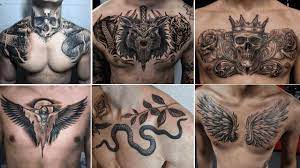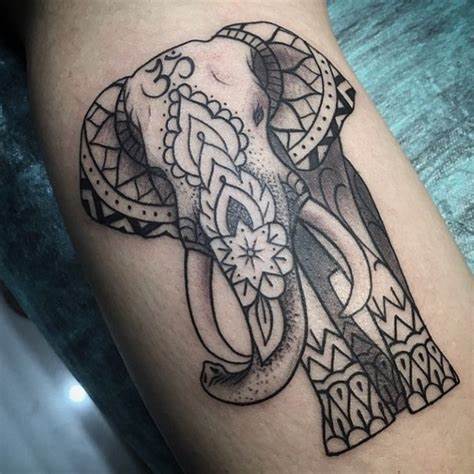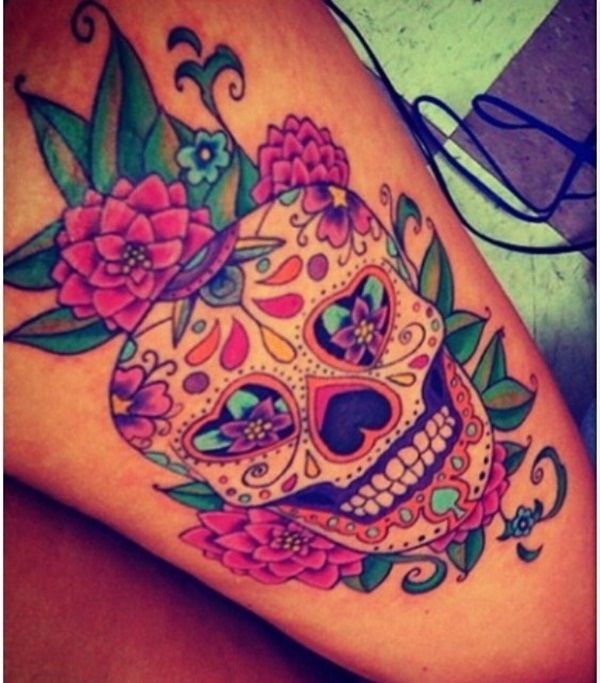
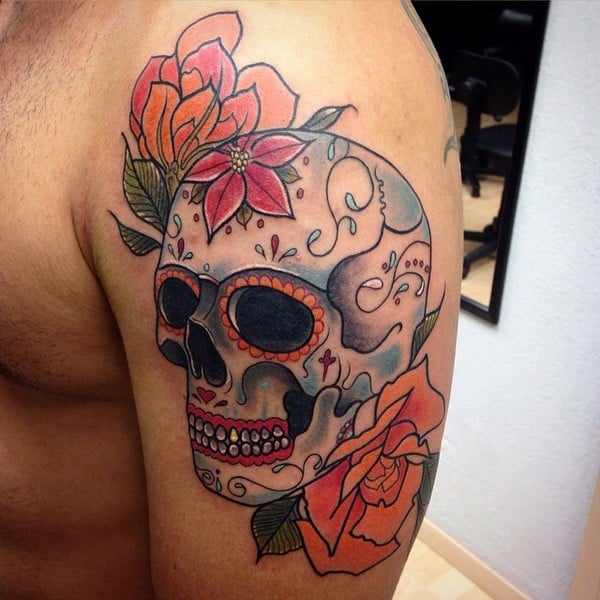
Sugar skull tattoos have long been an integral part of Mexico’s Day of the Dead celebration, featuring as its defining emblem and often decorated with colorful embellishments to commemorate and remember those who have passed on. These skulls represent the intersection of life and death, reminding us to cherish every moment of life as time slips away.
Meaning
Tattooed sugar skulls (known as Calaveras) are integral to Mexican and Latin American traditions commemorating life and death, known as the “Day of the Dead.” Their bright designs evoke faith that our spirits continue beyond the physical end. Skulls are often decorated with vibrant flowers such as marigolds to represent those who have passed on, giving the heads a sense of joy, beauty, and life while breaking free of traditional associations with death. Additionally, burning candles are sometimes added as well to symbolize remembrance. Other embellishments may also be added, including ornate patterns and personal symbols. For instance, one woman might ink her deceased mother’s name into their sugar skull to remember her; others might add an image from Frida Kahlo to celebrate their heritage and artistic legacy. These personal elements help individuals accept death with grace rather than fear.
Origins
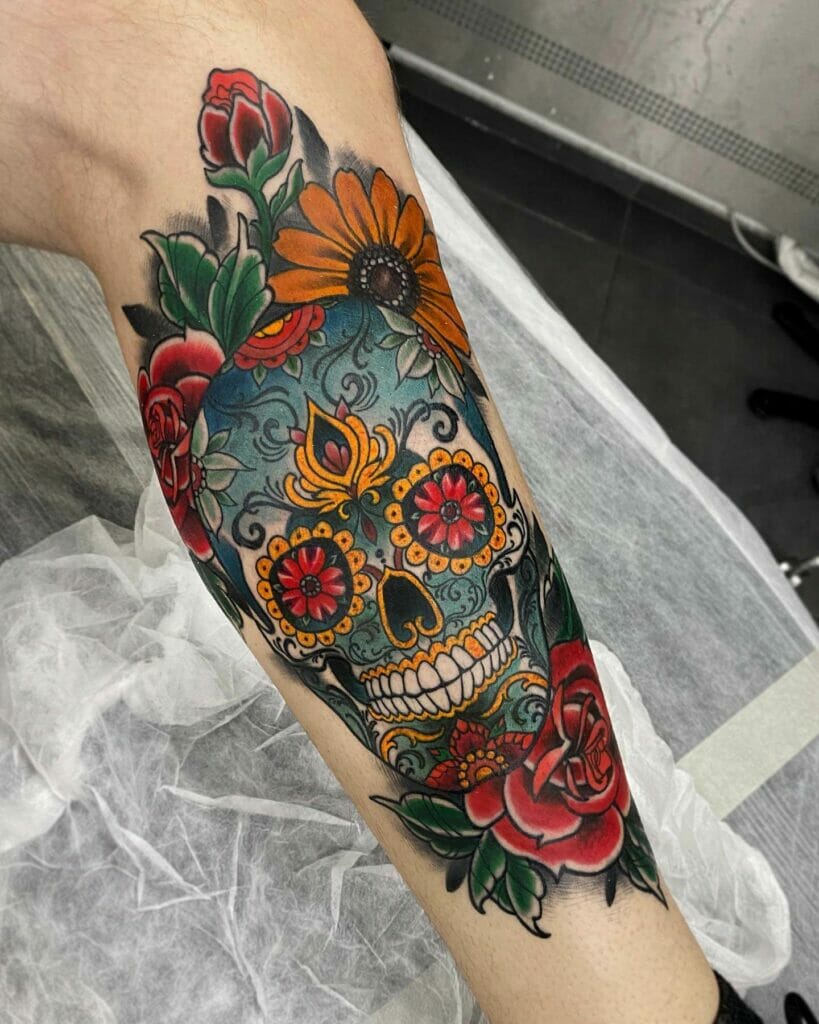
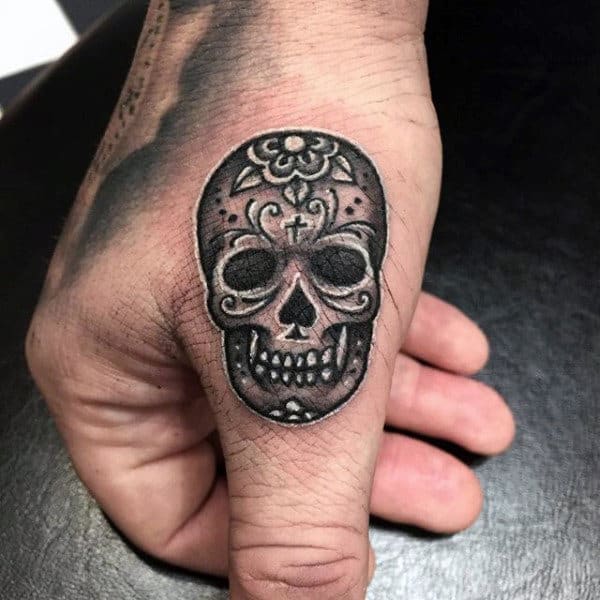
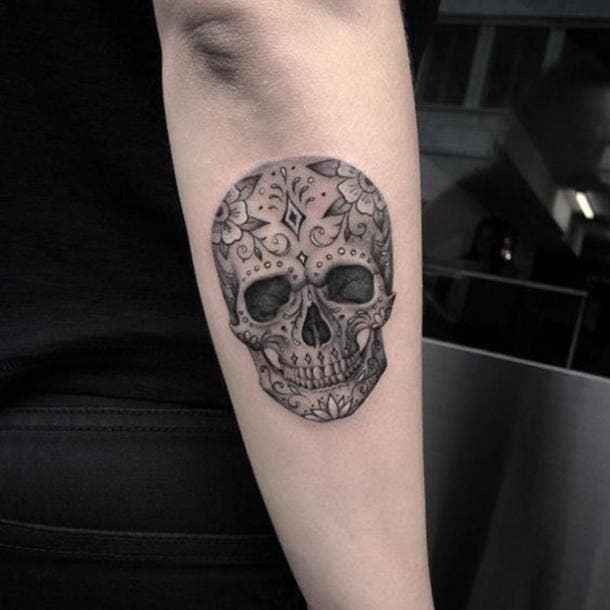
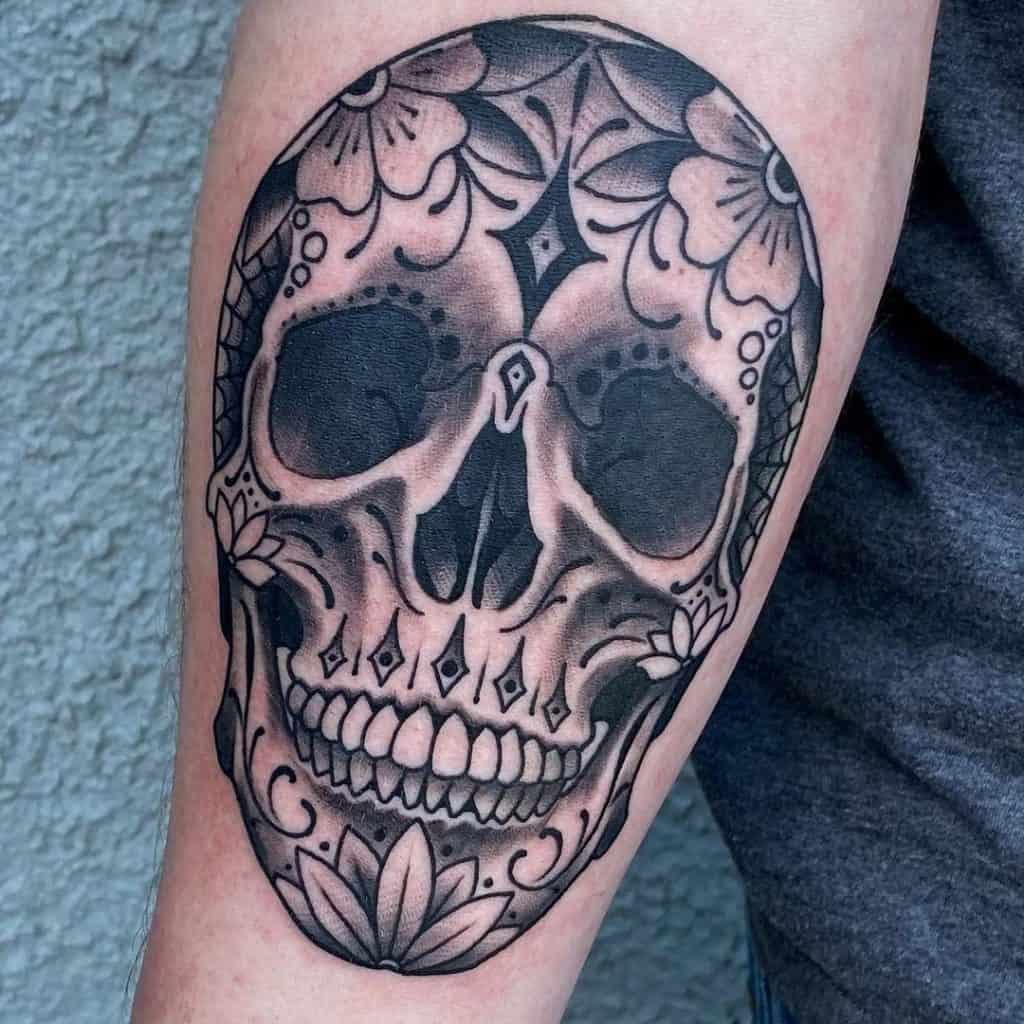
Sugar skull Tattoos are an elegant way to remember the dead and commemorate life. These symbolic tattoos represent our belief that their spirits still reside among us and will visit their loved ones on special occasions, which explains why sugar skulls come adorned with vibrant colors and decorative elements to make their design more lively and festive. Sugar skull Tattoos provide a positive interpretation of skulls as powerful symbols of mortality; instead, they represent celebration and rebirth into new lives – thus making the experience of having one much happier for many people. Tattoos commemorating those we lost typically feature floral motifs such as roses and marigolds to represent beauty and remembrance. In contrast, elaborate designs around eyes and mouth areas represent connection and expression that transcend death. Furthermore, these Tattoos may also serve as a way of paying homage to deceased celebrities.
Symbolism
Many people choose a sugar skull tattoo to honor deceased loved ones or as a means to symbolize spiritual connections and the ever-presence of ancestors. Sugar skull tattoos can often be decorated with flowers, feathers, and other ornamental elements for a splash of vibrant colors – Marigolds are particularly popular, but any hue can be used. Other elements that can be included in a tattoo design are stars, hearts, lines, and dots. Many also enjoy adding personal symbols or elements for a more meaningful innovation. Some believe skull Tattoos represent their internal struggle between beauty (life) and ugliness (death). The vibrant designs of these skull tattoos counter the traditional associations with death by showing it is part of life itself and should be celebrated rather than feared, especially among those who believe their departed loved ones will come to visit on the Day of the Dead to celebrate and rejoice at new beginnings on their journeys.
Styles
Tattooed skulls have long been associated with death. Sugar skulls offer a brighter, cheerier, and less frightening alternative. Sugar skulls are integral to Mexican culture and celebrations surrounding Dia de los Muertos (Day of the Dead). Many people choose to memorialize deceased loved ones with Tattoos honoring the person’s memory, such as sugar skulls or Calavera designs featuring flowers – representing life – or other elements that symbolize their passing. These memorials may include personal touches representing that individual as well. Sugar skulls can be combined with various designs for an eye-catching and distinctive aesthetic. This is especially true of feminine designs featuring intricate floral motifs or curving line work. They typically feature roses as they’re associated with femininity, but could feature any flower that symbolizes it instead. An increasingly popular style combines a sugar skull with religious imagery, such as Mary of Guadalupe or Santa Muerte (known in Mexico as Santa Muerte or Grim Reaper). This type of tattoo usually appears best on either the forearm or shoulder to maximize visibility to others.
